Attractive differences ...
TD-20 thermal desorber – Comparative emission analysis of defects in polymers
By Franky Puype and
Jiri Samsonek
Institute for Testing and
Certification, Zlin,
Czech Republic
Polymers are all around us and are indispensable in daily life. Although many polymer manufacturers produce high quality products, it may happen that a defect appears. The source is usually not known and a chemical analysis needs to be done. Defects such as smell, discoloring, fracture, fogging, blooming and contamination are easy to detect if a reference sample is available. This so-called comparative method is generally accepted by the scientific community.
The objective of defect analysis is not to find “bad guys” and “good guys” but to predict unexpected factors and lead to new approaches and prevention. In terms of economics, defect analysis can prevent much trouble for producers and help their customers during a warranty reclaim period.
TD-20 as an excellent tool for polymer analysis
From an analytical point of view, screening of the non-bounded molecules in a polymer matrix usually suffices to find the origin of the defect. Direct thermal extraction of volatiles and semi-volatiles from the polymer by use of the TD-20 has the great benefit that it is quick and requires almost no sample preparation. A piece of polymer is placed in a glass tube and plugged on both sides with glass wool.
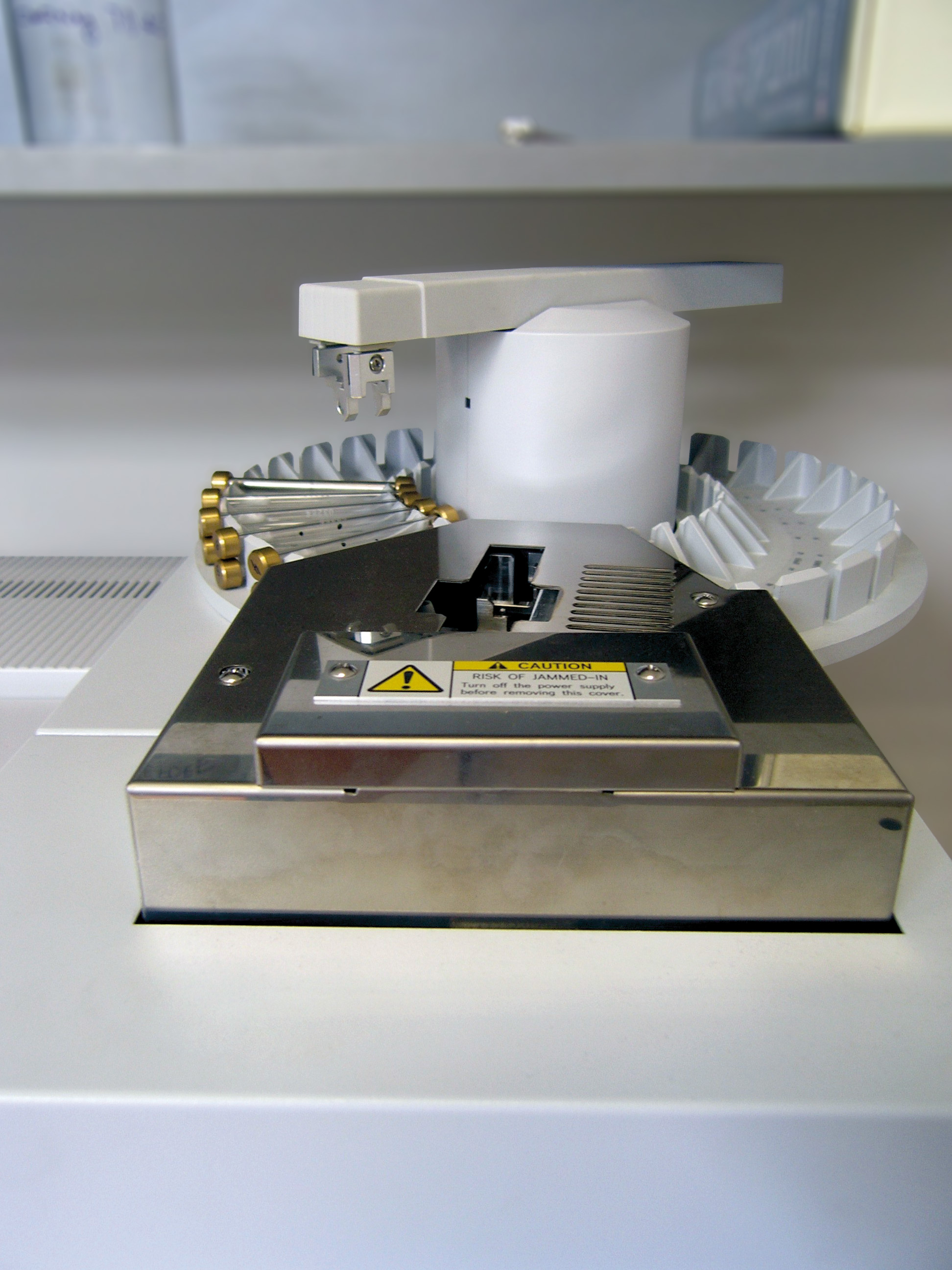 Figure 3: TD-20: Rear, Thermodesorption tubes in the sampler. Front, Heater for desorption step.
Figure 3: TD-20: Rear, Thermodesorption tubes in the sampler. Front, Heater for desorption step.
Cooling – Sampling – Desorbing – Go!
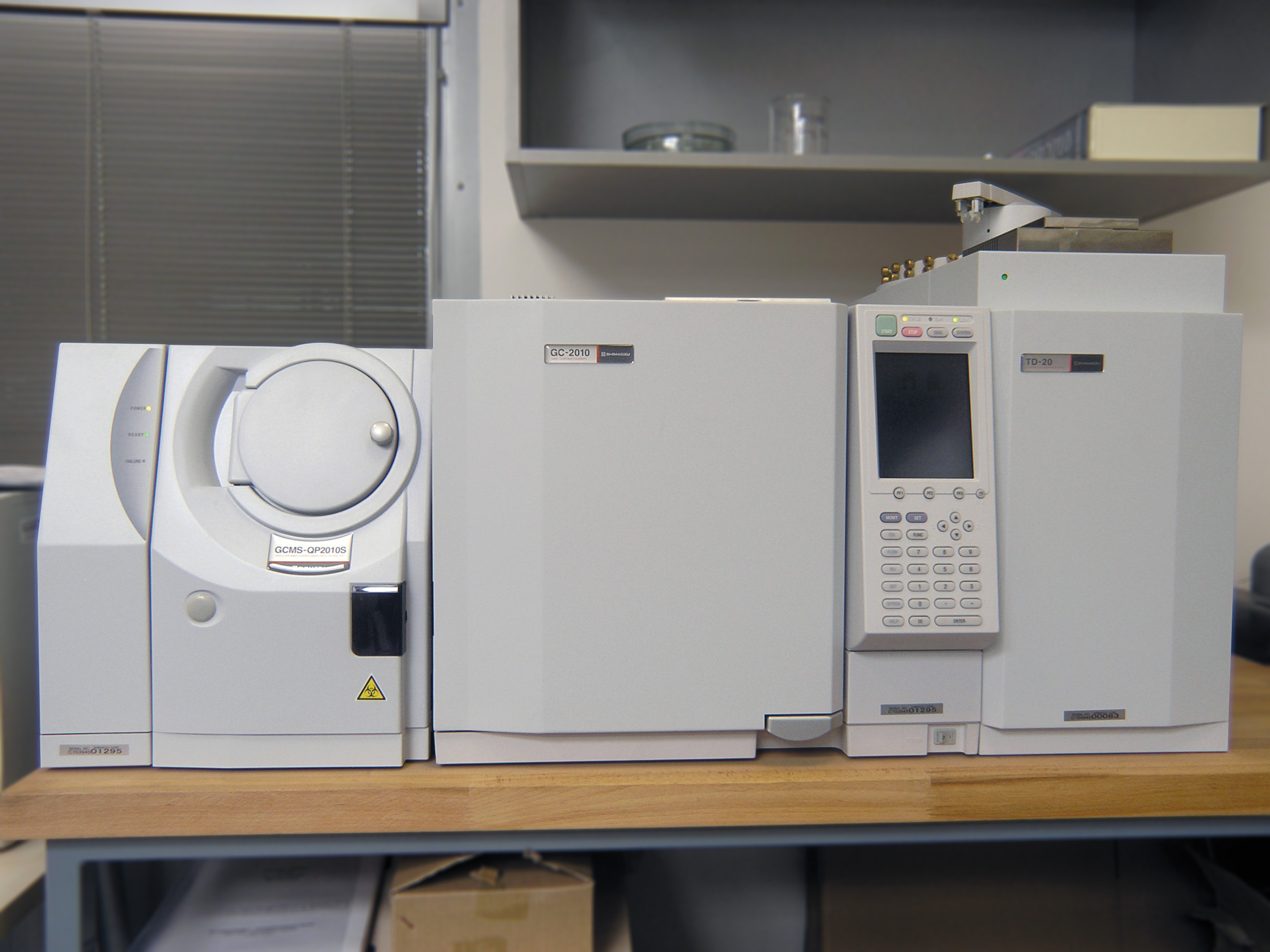 Figure 4: TD-20 with GCMS-QP2010 Ultra
Figure 4: TD-20 with GCMS-QP2010 Ultra
The TD-20 thermal desorbing system includes a programmable 6-port high temperature valve connected to a cold trap containing TENAX TA trapping material. This trap is cooled before and during sampling to 50 °C below ambient temperature in order to trap a wide range of analytes. During sampling the polymer in the glass tube is heated, and emissions evolve in a temperature range from ambient to 280 °C according to the needs of the operator. This wide temperature range is useful in evaluation of defects such as smell or high molecular weight contaminants.
After sampling, the trap with the TENAX TA heats quickly to its maximum temperature and the analytes of interest are redesorbed and swept into the analytical column. The connected GC-MS gets its start signal from the TD-20 and off we go!
Smell evaluation
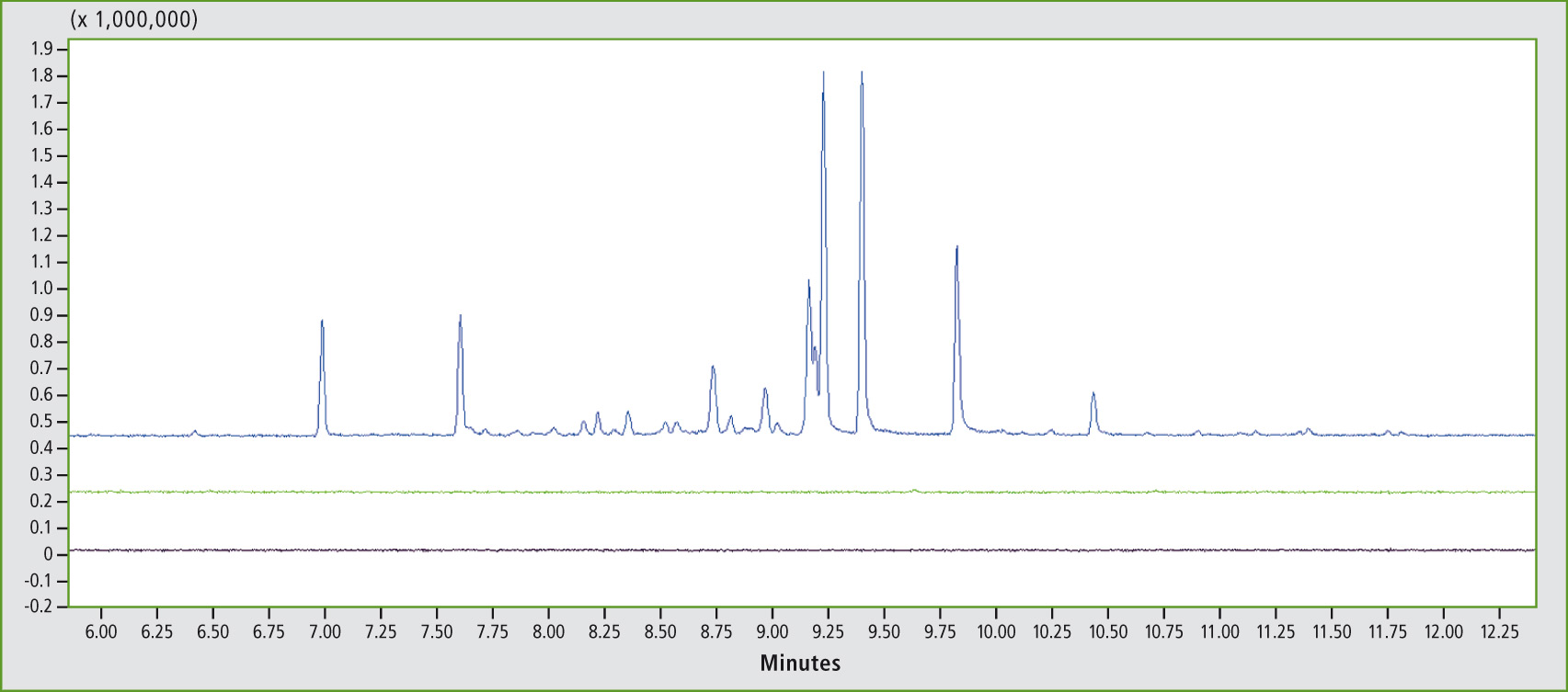 Figure 1: Comparison of low molecular weight emissions from a smelling PVC sample (blue chromatogram) and a reference PVC sample (green chromatogram). The samples were compared with a blank measurement e.g. lab air in a glass tube (black chromatogram). TD-20 conditions: 90 °C, 30 minutes.
Figure 1: Comparison of low molecular weight emissions from a smelling PVC sample (blue chromatogram) and a reference PVC sample (green chromatogram). The samples were compared with a blank measurement e.g. lab air in a glass tube (black chromatogram). TD-20 conditions: 90 °C, 30 minutes.
In the following example the TD-20 proves great performance in the profiling of volatiles from PVC samples with complaints of smell (Figure 1). After comparative analysis, a mixture of free aliphatic alcohols was detected in the sample with smell. These aliphatic alcohols should esterify to the plasticizer diisononyl phthalate. This non-esterified fraction causes a typical smell due to its volatility.
Rubber analysis
The TD-20 is a dynamic instrument, the software is easy to handle and its performance guarantees sufficient sensitivity for many applications and a very good reproducibility even for difficult matrixes. By performing an emission fingerprint, much new information can be obtained relating to differences between batches.
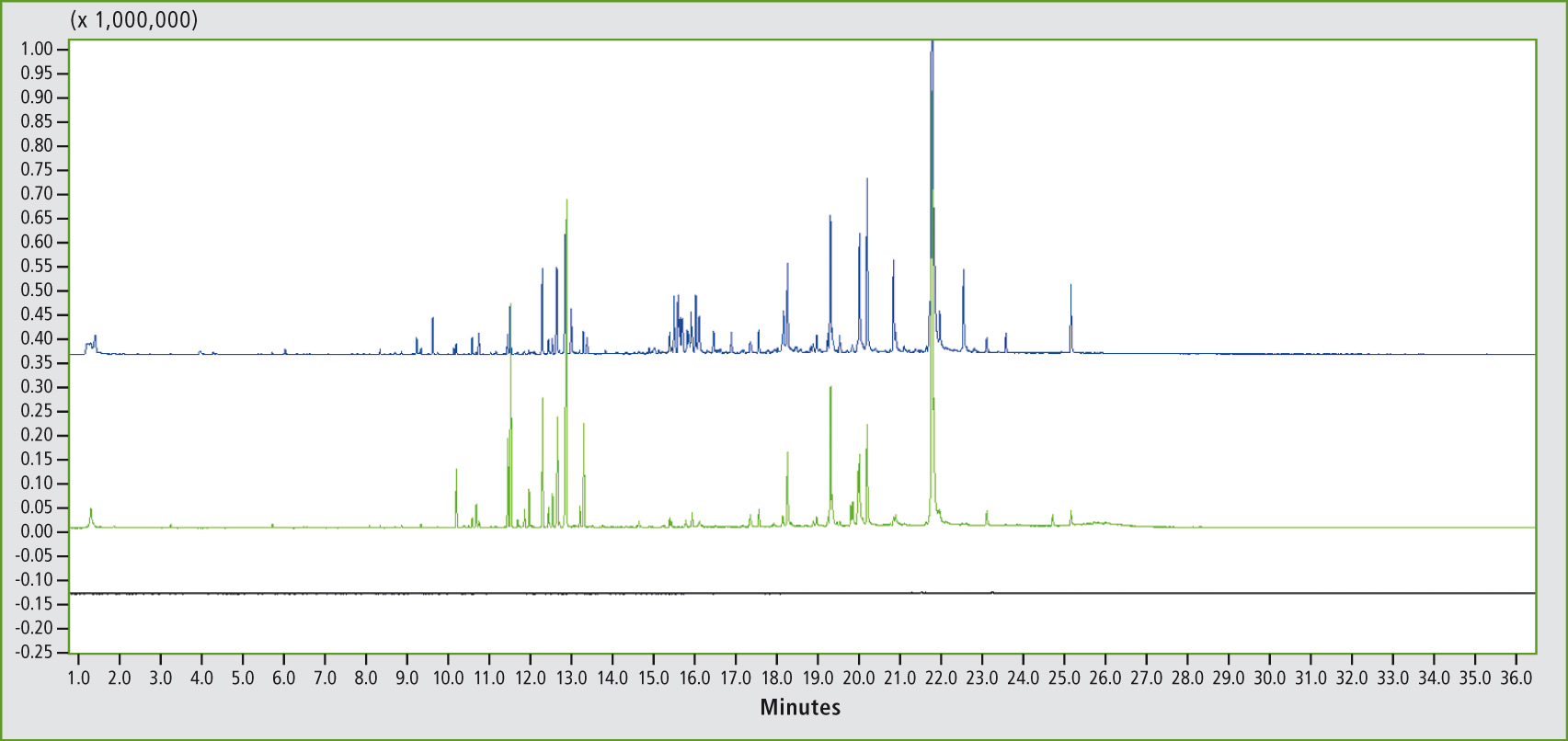 Figure 2: Comparison of emissions from a rubber batch with good physical performance (green chromatogram) and poor physical performance (blue chromatogram). The black chromatogram represents a blank measurement. TD-20 conditions: 120 °C, 60 minutes.
Figure 2: Comparison of emissions from a rubber batch with good physical performance (green chromatogram) and poor physical performance (blue chromatogram). The black chromatogram represents a blank measurement. TD-20 conditions: 120 °C, 60 minutes.
Figure 2 shows chromatograms of a defective rubber with poor physical performance and a reference rubber with good performance. Both chromatograms indicate emissions from hydrocarbons and typical rubber additives. A quick comparison of peaks shows that the defective rubber contains nonylphenol which was not present in the reference sample. Nonylphenol is an alkylated phenolic plasticizer and has many isomers. The presence of nonylphenol, in this case as a contaminant, has a high impact on the physical properties of rubber material.


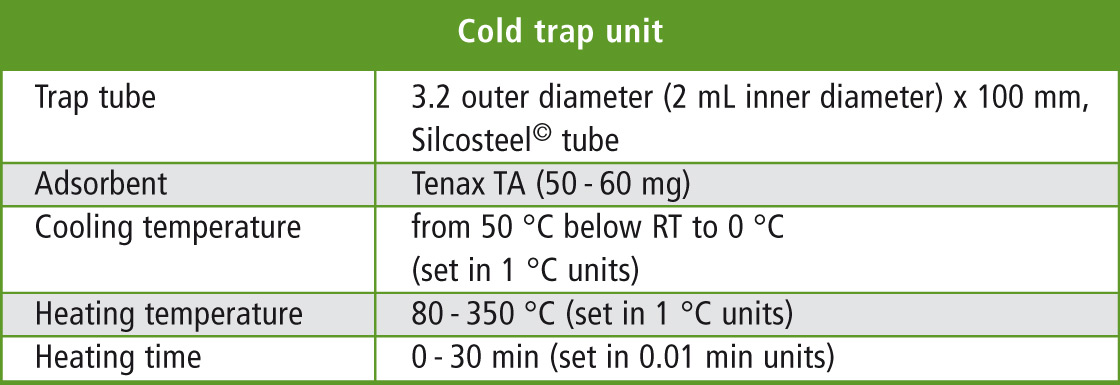


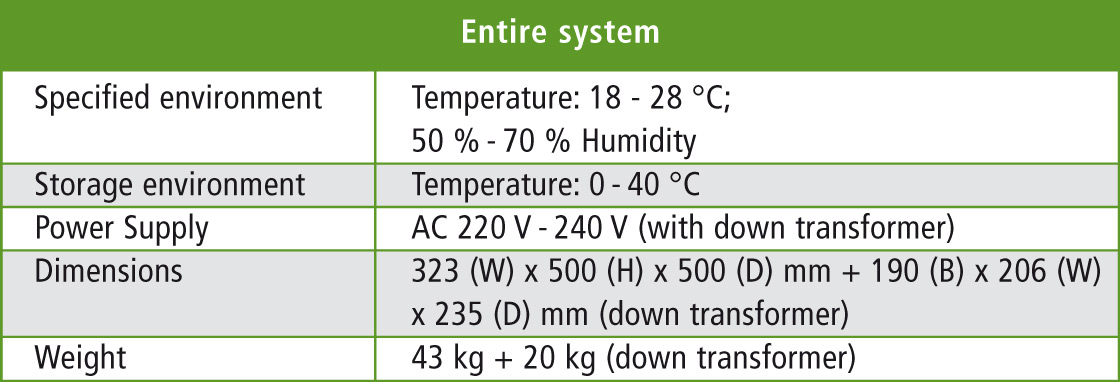 Table1: TD-20 unit specification
Table1: TD-20 unit specification